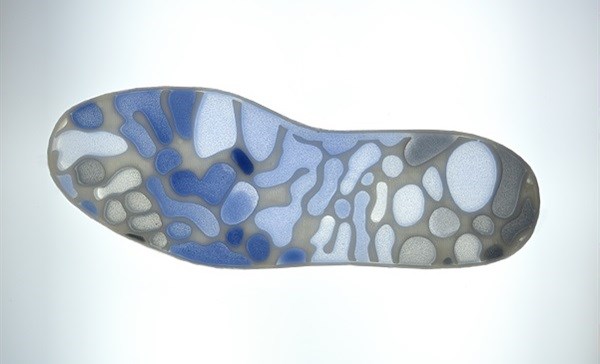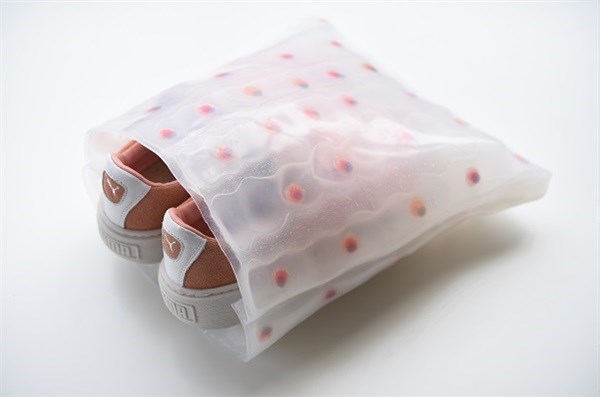
#DesignIndaba2018: The next generation of fashion is biology
Jessica Tennant 23 Feb 2018
Designing the future of self-adapting sportswear using bacteriaPuma and Massachusetts Institute of Technology (MIT) Design Lab have been collaborating on an exciting research project that looks at how bacteria can be used within sportswear design to improve performance and sustainability.  Puma x MIT Deep Learning Insole Among the research results is a breathing sports shoe that grows its own air passageways to enable personalised ventilation; a learning insole that prevents fatigue and improves athletes’ performance; and a t-shirt that responds to environmental factors by changing its appearance to inform the wearer about the air quality. The project uses biodesign – the practice of using living materials such as algae or bacteria to create products – to develop athletic gear that responds and adapts to the wearer's environment in real time. "[Biodesign can] provide a new way of engaging with materials, a self-assembly of material, where bacteria can be responsible for completing the manufacturing of the shoe, where the whole experience of the shoe becomes complete when it interacts with the human body," said MIT Design Lab director Yihyun Lim, according to a report by Dezeen. "We are imagining products that can adapt to users and the environment in real time, without the user having to do anything, [to] optimise their movement, body and their performance. Products will behave on behalf of the athlete, in real time and effortlessly."  Puma x MIT Adaptive Packaging The 'Adaptive Dynamics: Biodesign' project was debuted during Milan Design Week in April, with Puma and MIT showcasing four of their initial experiments, detailed below. 1. Deep Learning InsoleThe next generation Deep Learning Insoles improve the athlete’s performance through real-time biofeedback. The sole uses organisms to measure long and short-term chemical phenomena that indicate fatigue and well-being. 2. Breathing ShoeThe biologically active Breathing Shoe pushes the boundaries of biofabrication and enables 3. Carbon EatersThe microbially-active t-shirt responds to environmental factors by changing its appearance and informing the user about air quality. 4. Adaptive PackagingThe research also looked beyond current wearables and produced biologically The exhibition was powered by a desktop bio-prototyping platform by design studio Biorealize, which brings the capabilities of a biology wetlab into a single piece of hardware that enables the user to design, culture and test organisms. “Through these organism-enhanced products we aim to create a stronger link between the user and the environment, by bringing awareness to the invisible organisms that are supporting our life cycle,” Lim concluded in the Dezeen report. Video credit: Bin Xu and MIT Design Lab team For morePuma and MIT Design Lab envision a future of self-adapting, performance-enhancing sportswear About Lauren HartzenbergManaging editor and retail editor at Bizcommunity.com. Cape Town apologist. Dog mom. Get in touch: lauren@bizcommunity.com View my profile and articles... |